Play With Food
Creating a Stress-Free Home Environment for Tube-Fed Children
How can we utilize design to transition feeding therapy practices into the home environment continuing the tube weaning process with children that have been tube fed since birth? By educating parents, making the mealtime playful, and creating tubie representation, the Play With Food set answers this question.
Roles
Design Sketching & Ideation
User Research & Analysis
Illustration & Storyboarding
Writing & Book Design
Prototyping & Production
Studio Photography
Mentors
Katrine Mueller-Russo, Robert Langhorn
Tools
SolidWorks, Rhinoceros 3D
Silicone Casting
3D Printing Resin & ABS
CNC Milling Machine
Illustrator, InDesign, Photoshop
Intro
Many children are born with complex diseases that prohibit them to chew, swallow, or keep food down, making it impossible to drink liquid or eat solid foods. Because of this, they receive nourishment through a feeding tube.
How can tube fed children transition to oral feeding after their medical conditions are resolved?
These children experience trauma and develop oral aversions from throwing up and suffering from reflux after being fed (when possible), enduring complex conditions and surgeries, and by being pressured by their parents to eat.
To tube wean is to gradually transition them from tube feeding to oral feeding. Similar to weaning from breastfeeding, tube fed children can slowly transition to solid foods of various textures and flavors.
Discover
Child Healthcare Network
For a child to grow in a society, several groups and individuals support them aside from the members in her immediate family. Healthcare professionals assure the child is in good medical conditions, neighbors and teachers educate them, and the surrounding community aid in their social development. For these groups and individuals to help raise a child efficiently, they have to bypass or work through the child’s parents, making the network surrounding the child parent-centric instead of fully child-centric.
Parent-Child Relationship
How is the child’s feeding experience different from the parent’s point of view? What does the child feel while being spoon-fed?
Parents
Parenting is already a challenge, but there are immediate effects after any complication – children are neglected, family relationships are broken, or financial problems ensue. How can parents learn to manage their mental health conditions while not being detrimental to their child or family dynamics?
Medical Professionals
Occupational therapists are an important emotional and educational support to the parents by helping them understand their child’s cues and improving the social interactions between them.
After interviewing many feeding therapists and a lactation consultant, I gained a more intimate insight to the weaning process. Each therapist works in similar environments but they approach the therapy differently and their programs vary from one another.
Feeding Therapies
The main feeding therapies used to tube wean children are: mealtime focus (Morris, New Visions), Sequential Oral Sensory (SOS) approach (Toomey & Associates), Applied Behavioral Analysis (ABA), Baby Led Weaning (BLW), and hunger-based approach.
Similar Environments
They work in areas that look like regular feeding environments, such as a kitchen or a dinning room.
Allow Hunger to Develop
When tube fed children are allowed to become hungry, they became immediately interested in the food.
Positive Reinforcements
Incorporating tokens or reinforcements throughout mealtime and therapy increases the child’s engagement with the food.
Balance Variety
There is a fine line between engaging children with products that have different textures and colors and over-stimulating them with too much variety.
Allow for Time & Patience
Feeding therapy takes time and has a lot of ups and downs. One must trust the process.
Develop
Designing for Intimacy
How will I evaluate precedents to affect the aesthetics, form, material, and color? Since I am designing for children and their parents are the ones with purchasing power, I need to design a product that evokes trust in the parents yet is appealing for the kids to use and play with.
Creating Trust Through Design
All in all, I am designing for parents and children alike. The design principle lies in the sweet spot between evoking affection in the parents, designing for trust, and creating a joyful experience for the child.
How can design be used to transition feeding therapy practices into the home environment to continue the weaning process in tube fed children?
Using play picnics and its exploratory environment is healthy for the child and the parents. How can I design that physical space and emotional state at home?
Educating Parents
Educating the parents about their children’s point of view and maintaining a physically and mentally healthy home environment.
Integrating Playfulness
Implement a playful design to inherently reduce stress and anxiety to ease the weaning process at home.
Balance Engagement
Be engaging so that the children want to interact with it, yet not get distracted with over-stimulating textures and colors.
Inclusivity for Tubies
Maintaining inclusivity not only during the mealtime and at the dinner table, but also by assessing the diversity of all tube fed children.
Representation for Tubies
Creating representation among tube fed children by allowing them to feel identified by tubies, characters, and role models.
Designs
Playcemat
The Playcemat creates a playful eating environment to permit free interaction with food, reminding parents to allow their child to do so - no matter the amount of food eaten or messy consequences.
Prototypes
What is the most appropriate layout? Why is this the most appropriate design? I tested out different thicknesses and silicone shore hardnesses to get a better feel for the final prototype. If the material is too soft and thin, it will feel too delicate and therefore cause the parents or therapists to consider the placemat unreliable.
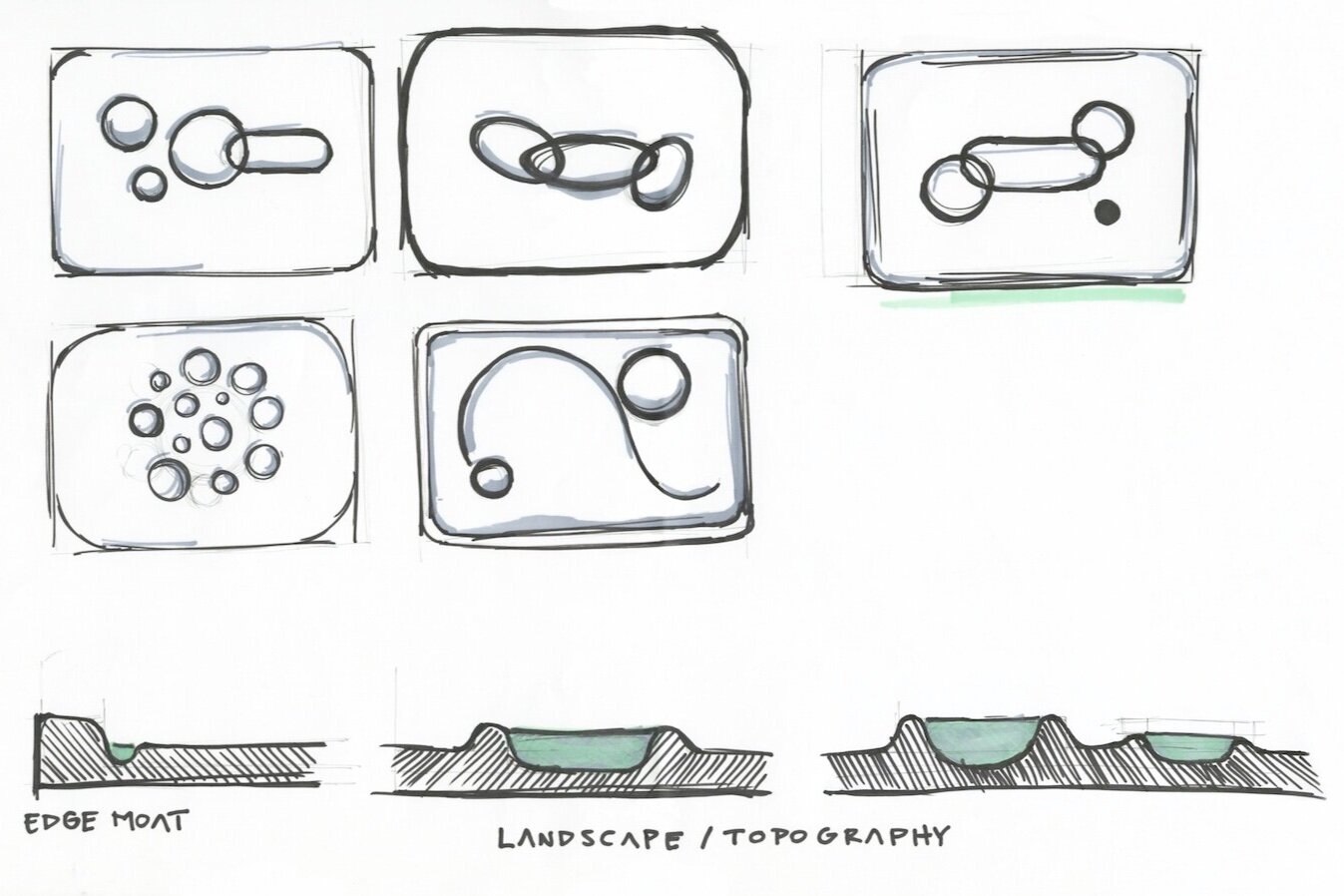
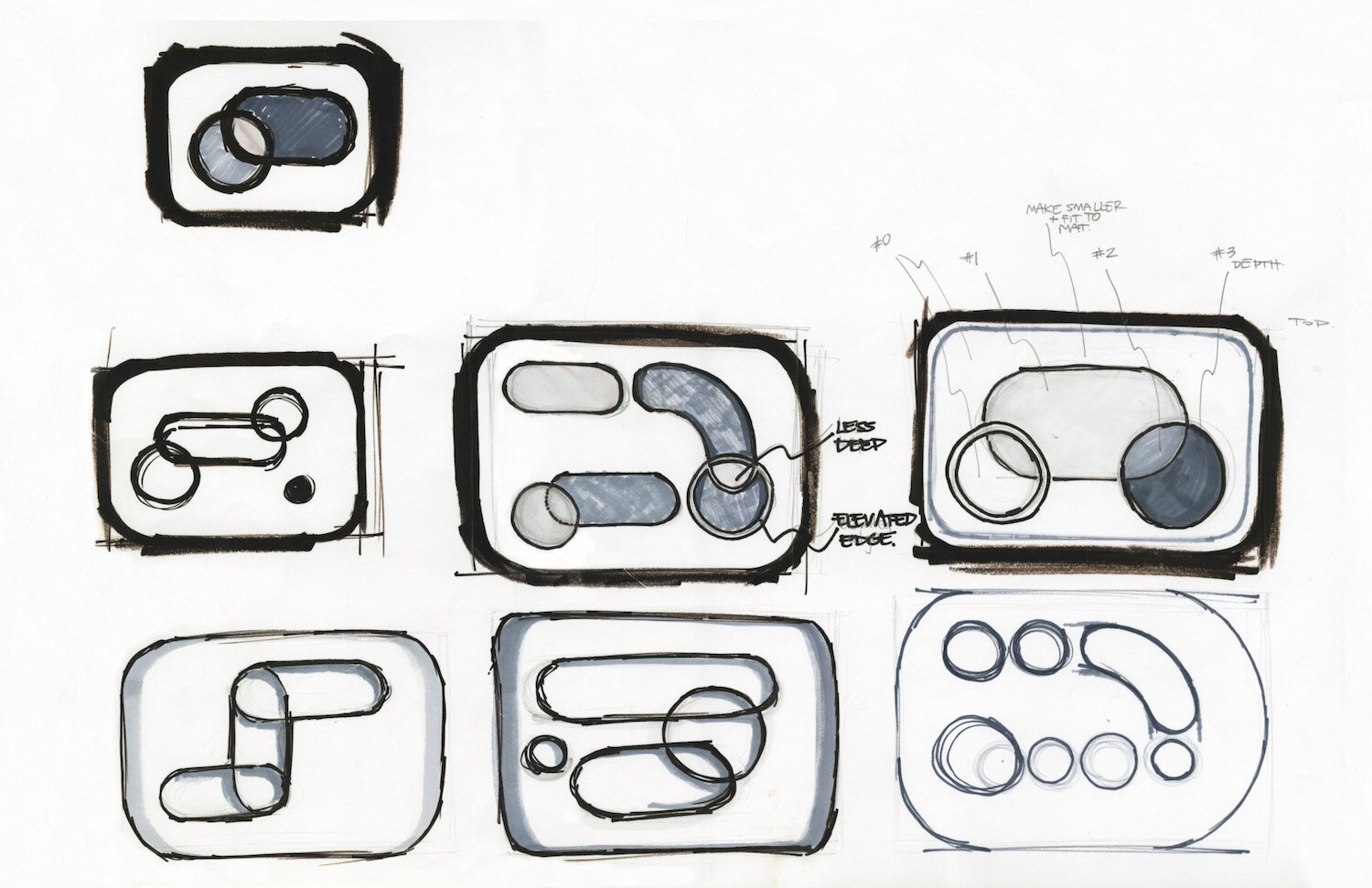
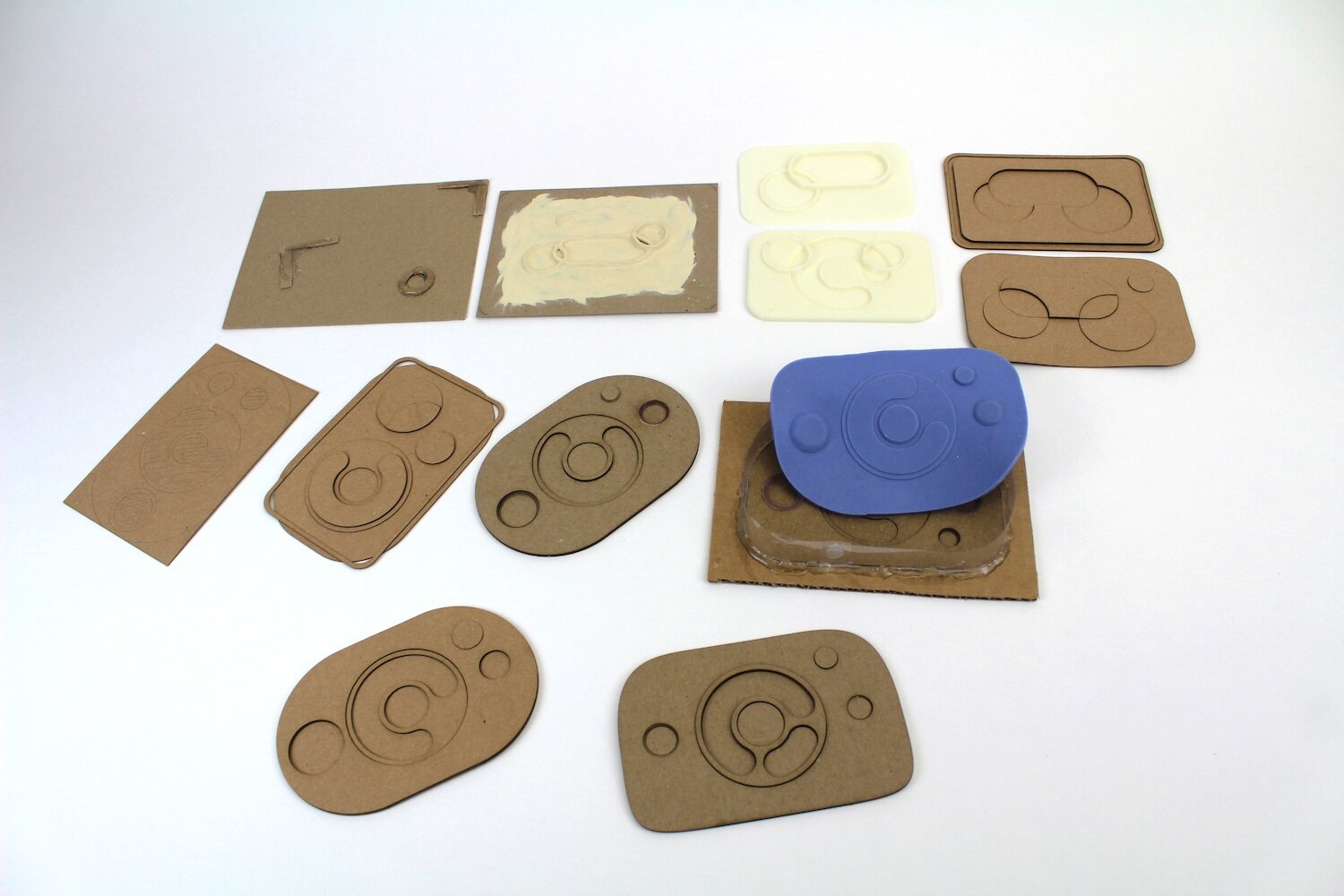
Making Of
After finalizing the design of the place mat, I made the positive, which became the mold of the mold, using high density corafoam and a CNC milling machine. After treating the positive mold with several layers of resin and paint, I cast the mold of the placemat out of plaster.
Finally, I cast the final placemat using a two part silicone, which I dyed myself to find the desired color. The blue-green and yellow-orange hues were deliberately chosen to be gender neutral yet still remain vibrant to attract the child’s attention.
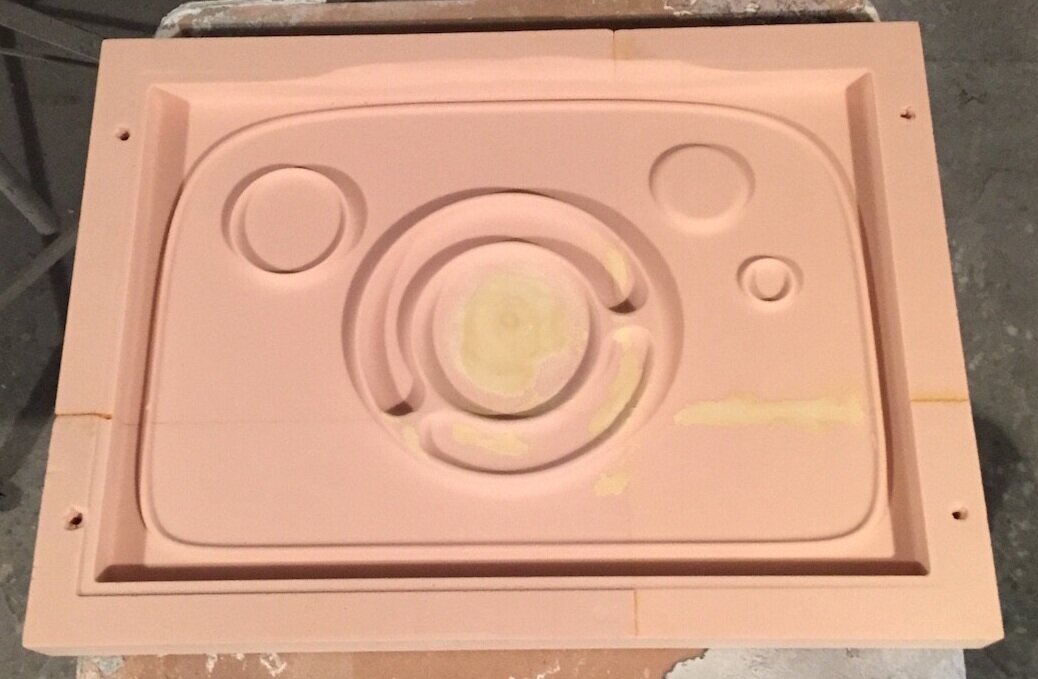
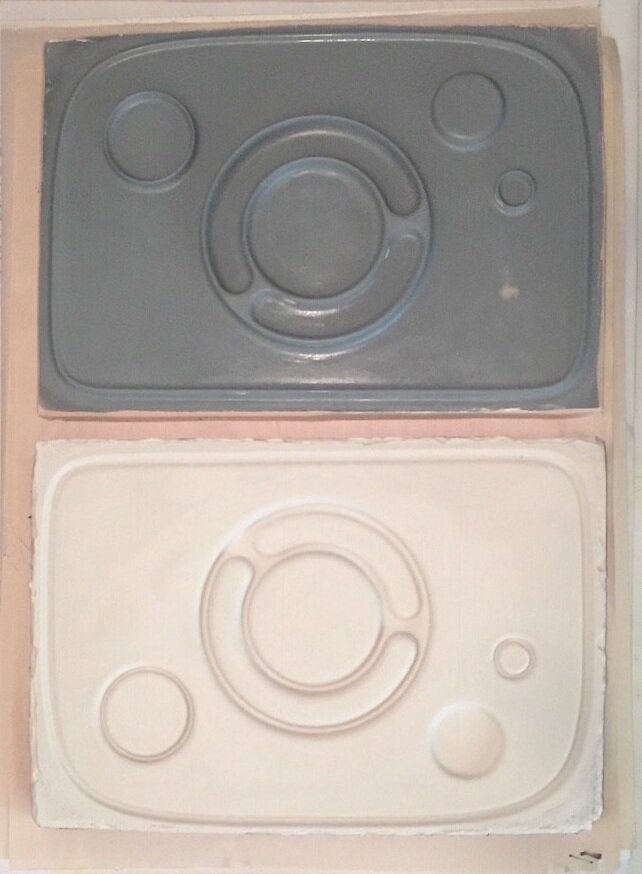
Features
The Playcemat was designed to be able to suction to virtually any flat surface, as long as the surface is not too textured. If a child were to pull on the elevated ridges, they would not be able to throw the Playcemat off the table. The edges of the Playcemat can be lifted to remove the suction from the table.

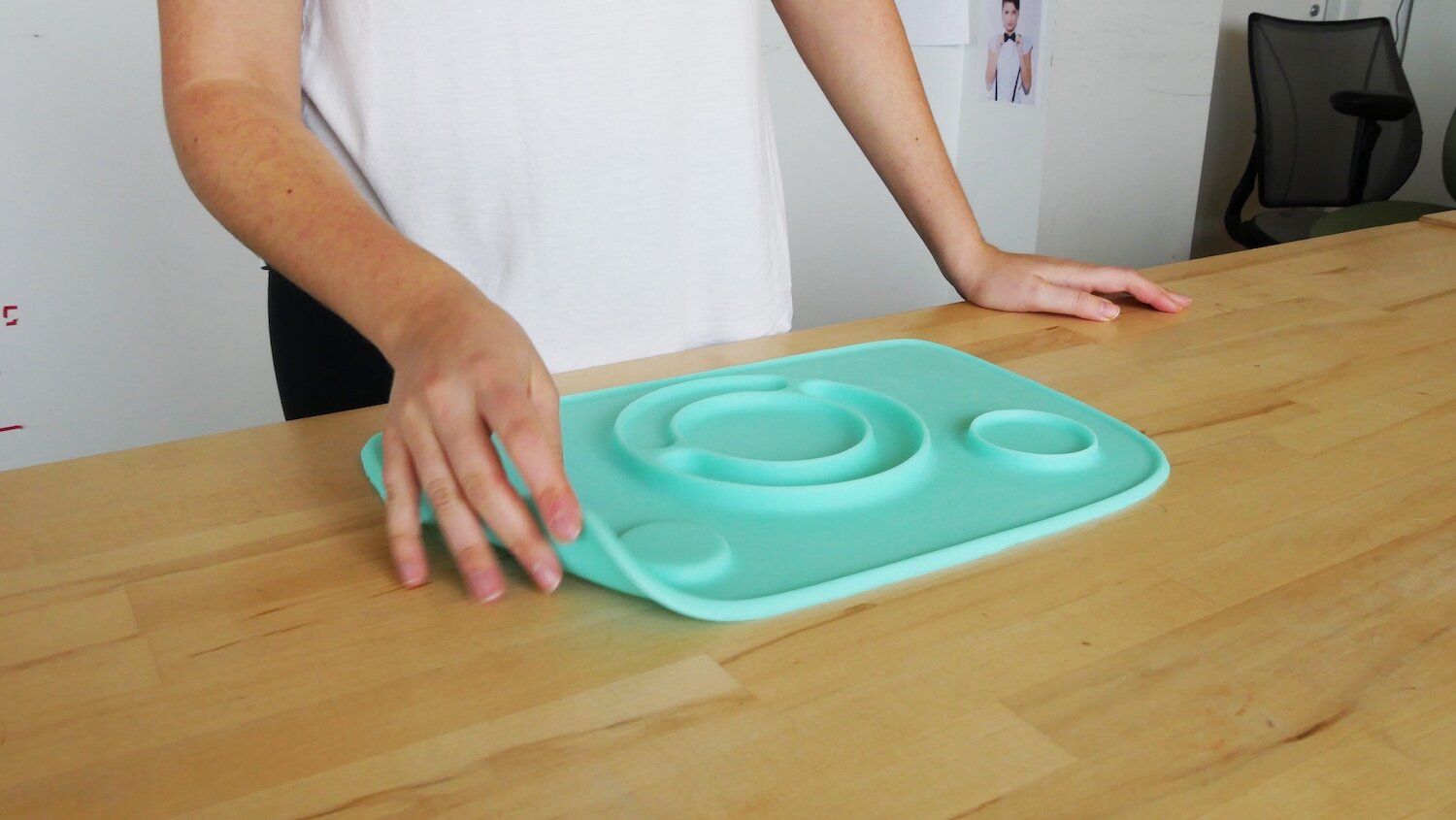
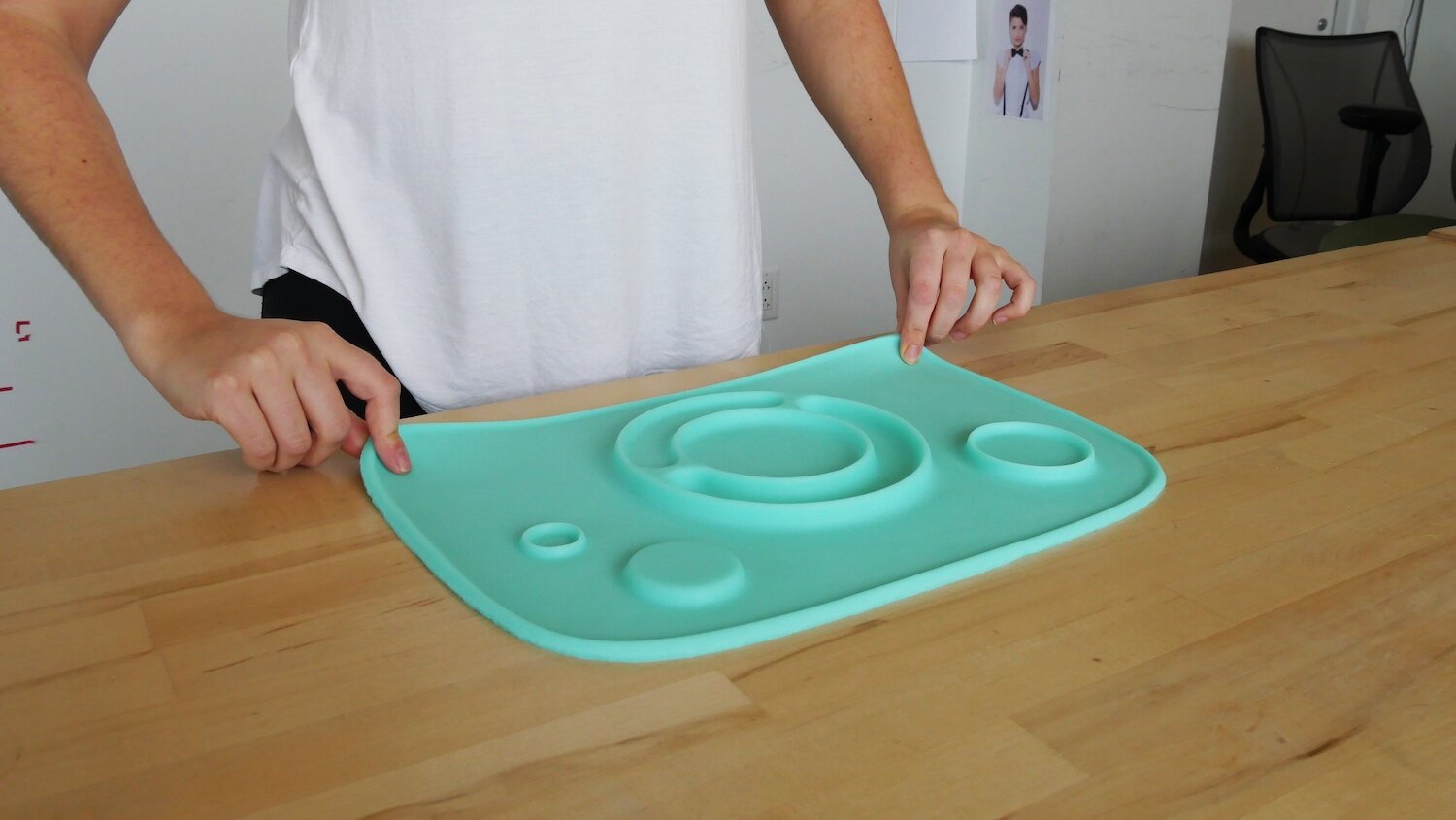
Further Development
To continue developing the design, I made a set of small bowls that can be used as the child grows and requires larger meals. The bowls could be designed to perfectly fit into the Playcemat’s elevations so that they would also be affected by the suction strength and impede the child to throw the bowls on the floor.
Tubie Doll
Tube fed children just want to be like other children and want a sense of belonging. Many mothers sew onto their children’s dolls old feeding tubes and tubie pads.
I designed the Tubie Doll because there is a need to have dolls that are more representative of the variety of children in the world, not just tube fed, but other children with disabilities that feel left out.
Dolls are also used during feeding therapy and can aid the occupational therapist and speech language pathologist.
Prototypes
I made several amorphous ellipsoidal shapes, that ranged from jelly beans to potatoes, and varied in proportions to find the right one. The doll’s body needs to be large enough so that the child can grab it with their constantly developing gross and fine motor skills.
Similar to the Waldorf dolls that “seek to enliven a child’s imagination” (Bella Luna Toys), the Tubie doll with its amorphous human-like body shape is ambiguous on purpose: so that the children can identify themselves more in the doll.

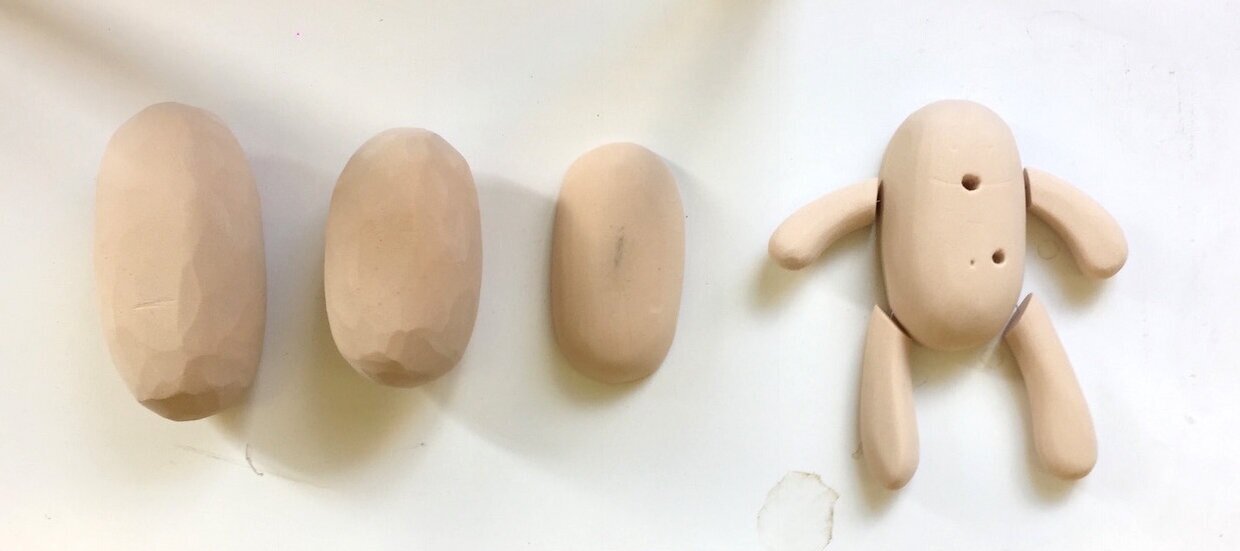
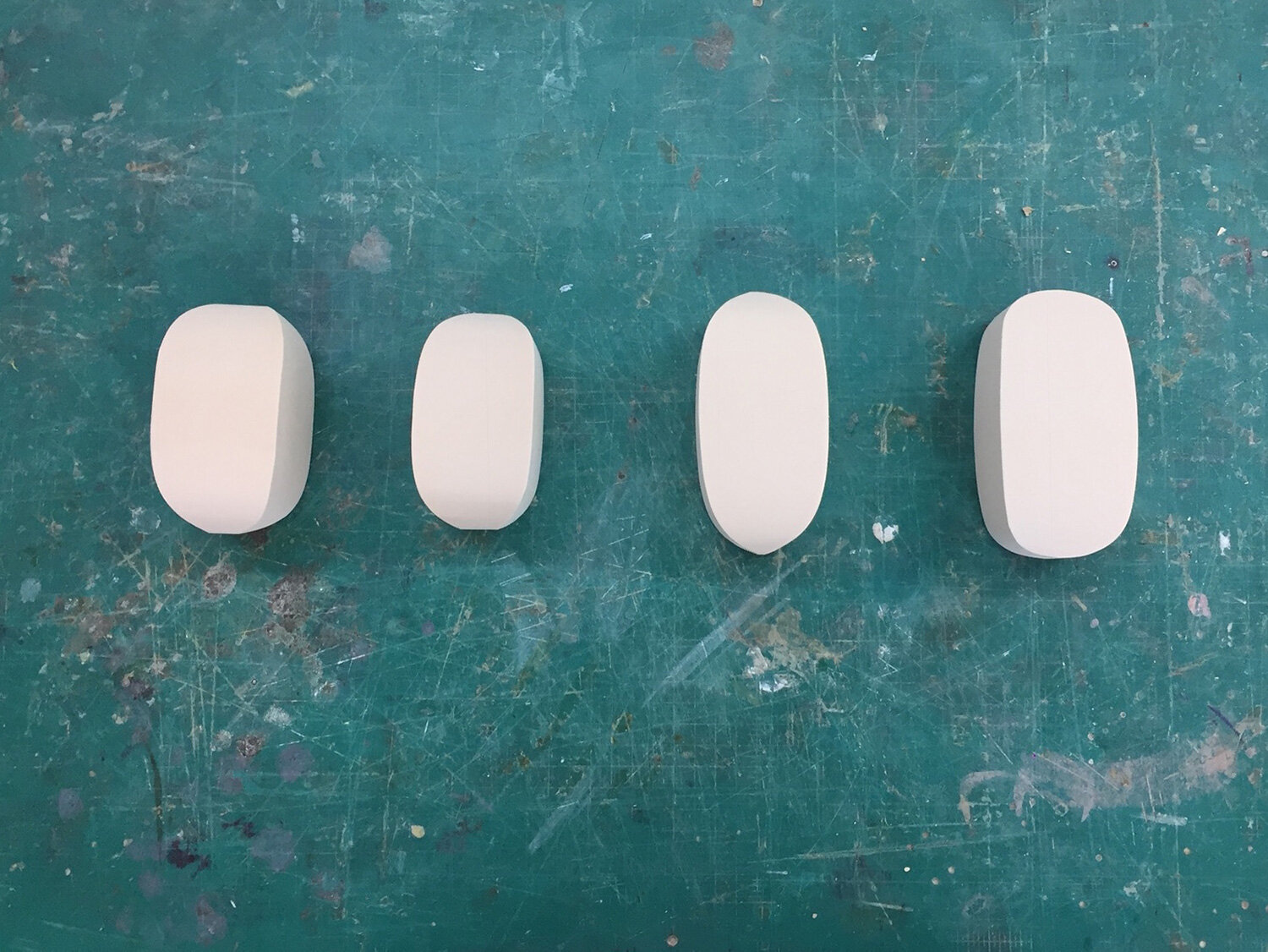
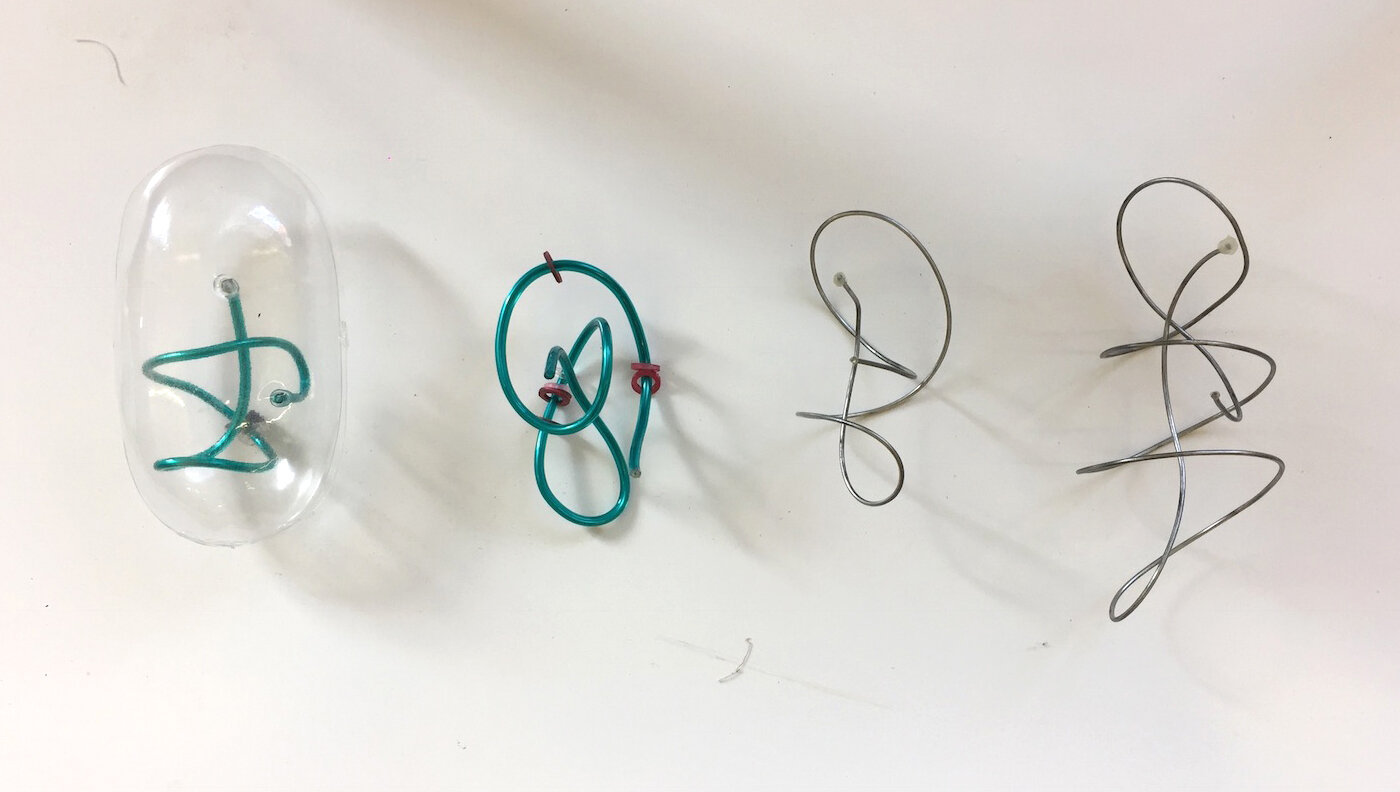
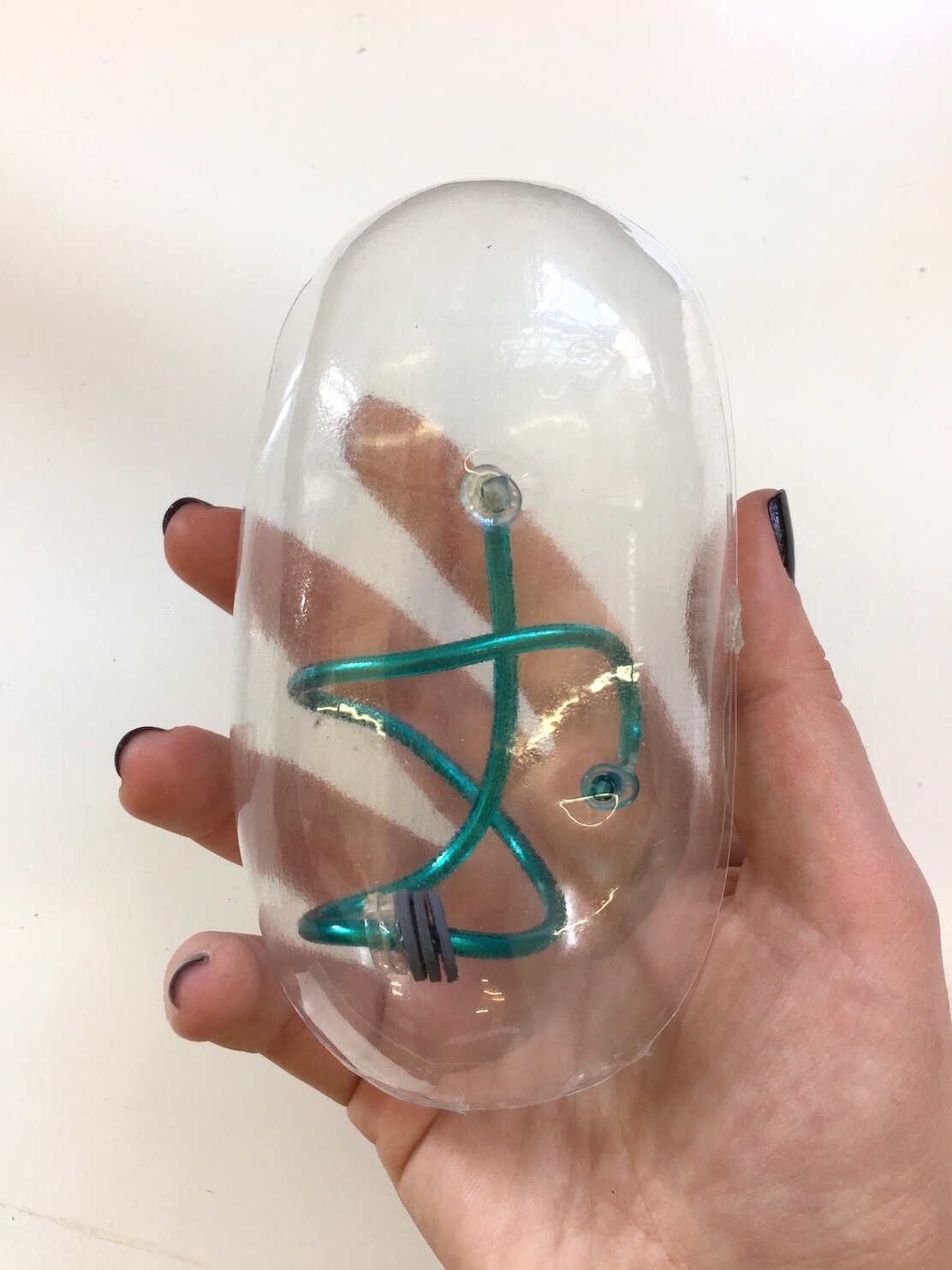
Making Of
After finalizing the design of the doll in SolidWorks, I 3D printed the extremities - one for the arms and one for the legs - to create the mold and the connections, which I call “bones”. These are designed to work as a ball and socket joint to connect to the doll’s body.
Features
The Tubie doll can sit on the Playcemat to aid in the tube weaning process. The extremities are soft enough to be squeezed by the child.
The inside “beads” are designed to be rattled and moved through the inner tube. It can also work as an education tool to teach the child about how their body works, why they use a tube and how it works in comparison to eating through the mouth.
With these features, the child can have both a doll to feel represented by and a toy to play with.
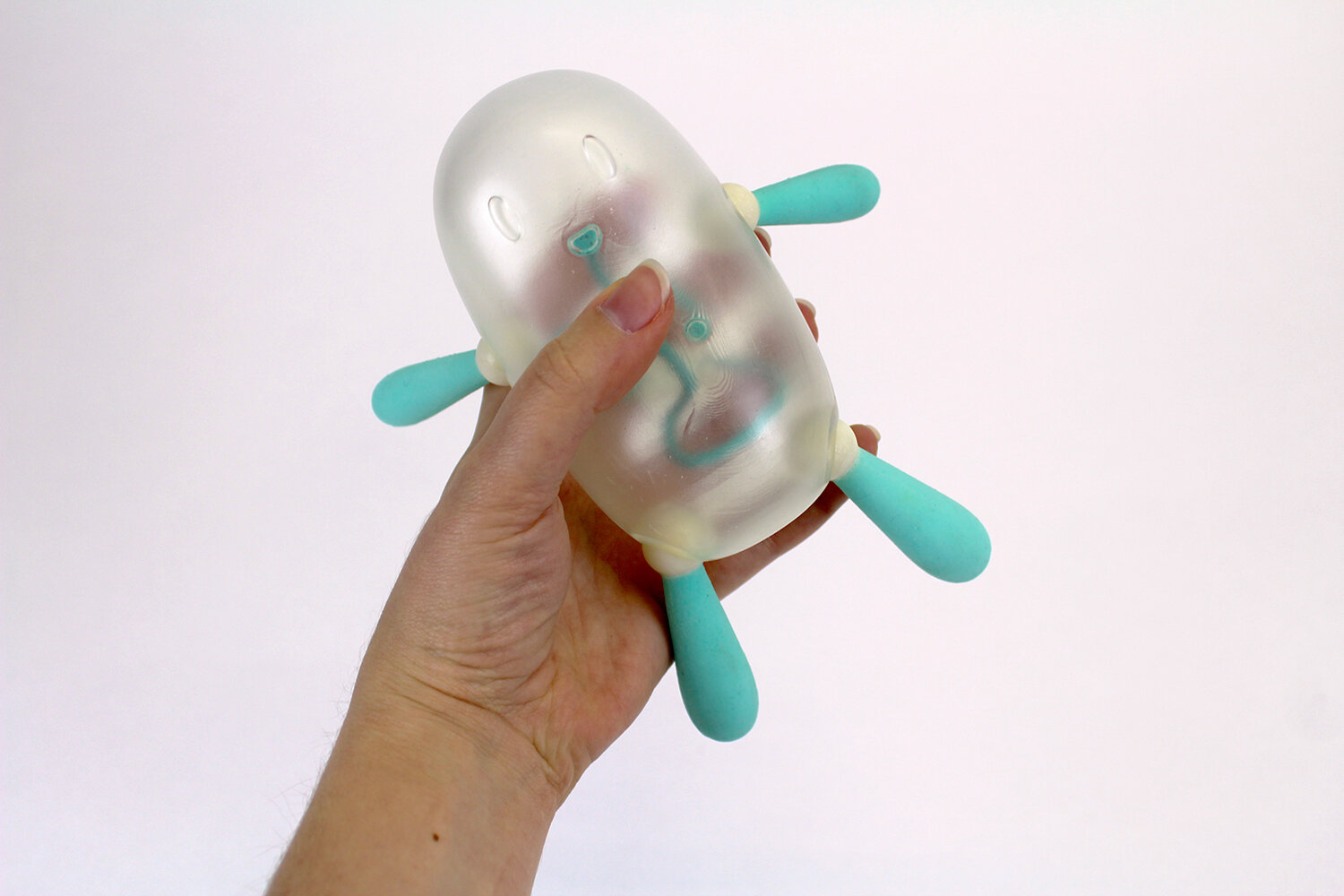
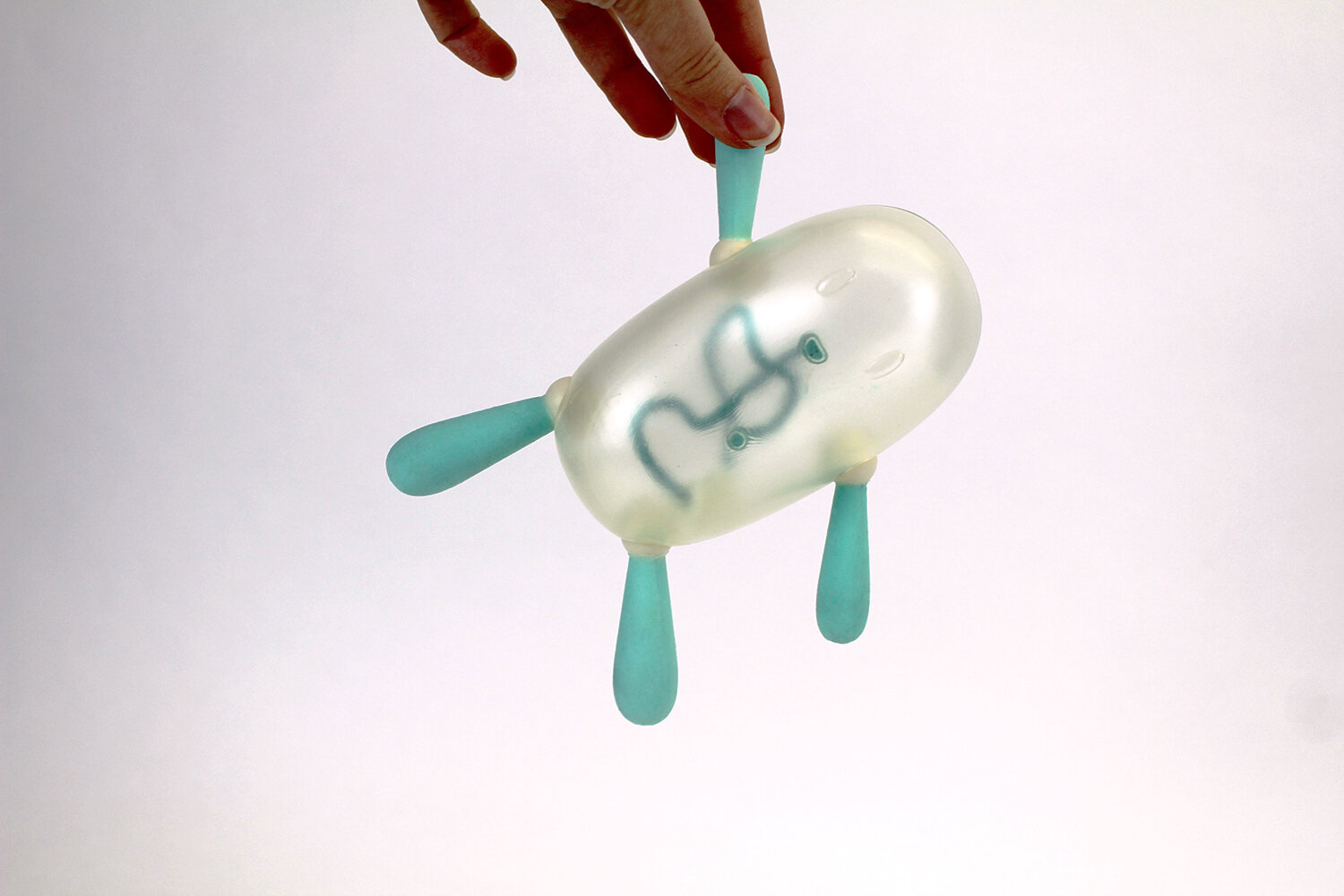
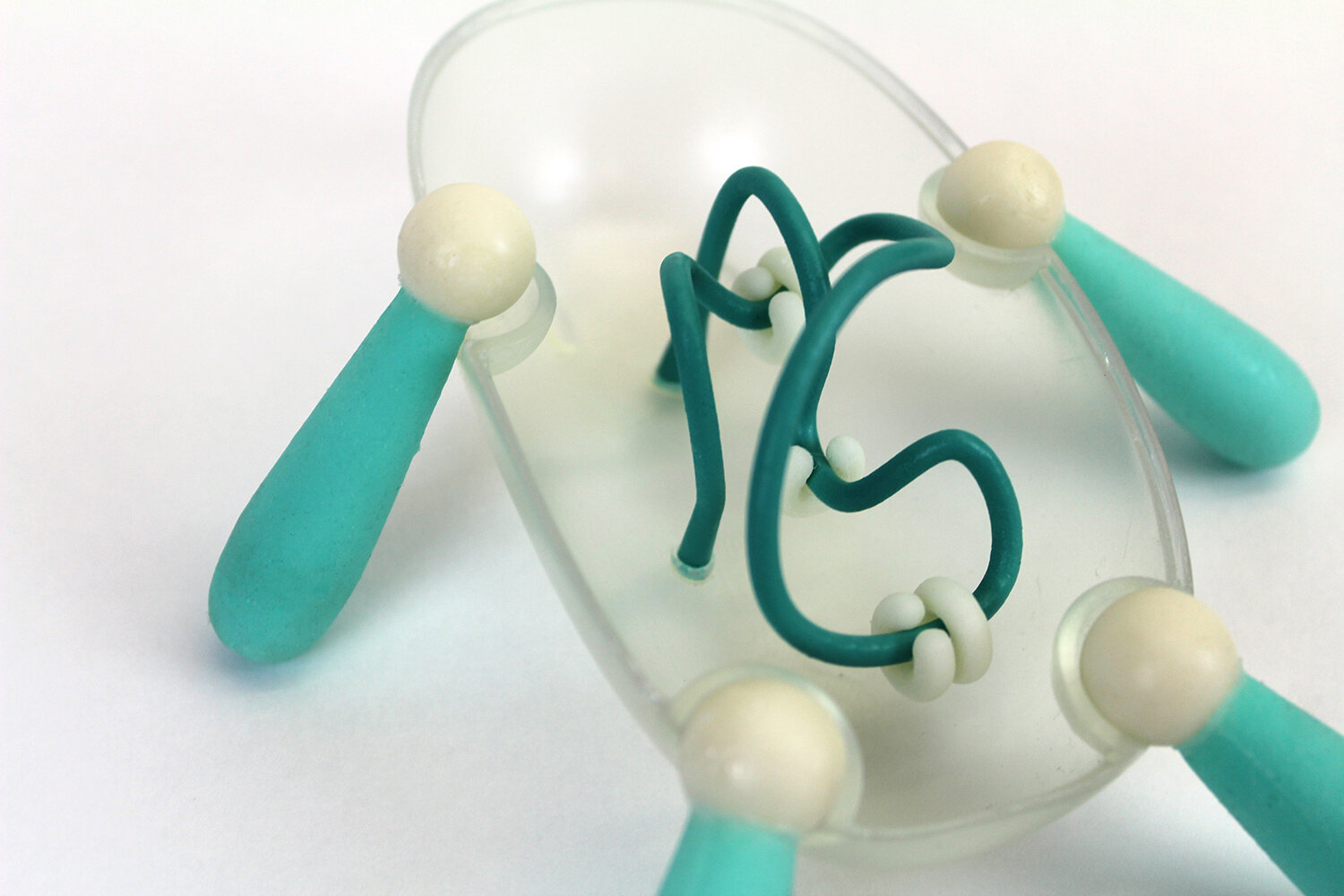
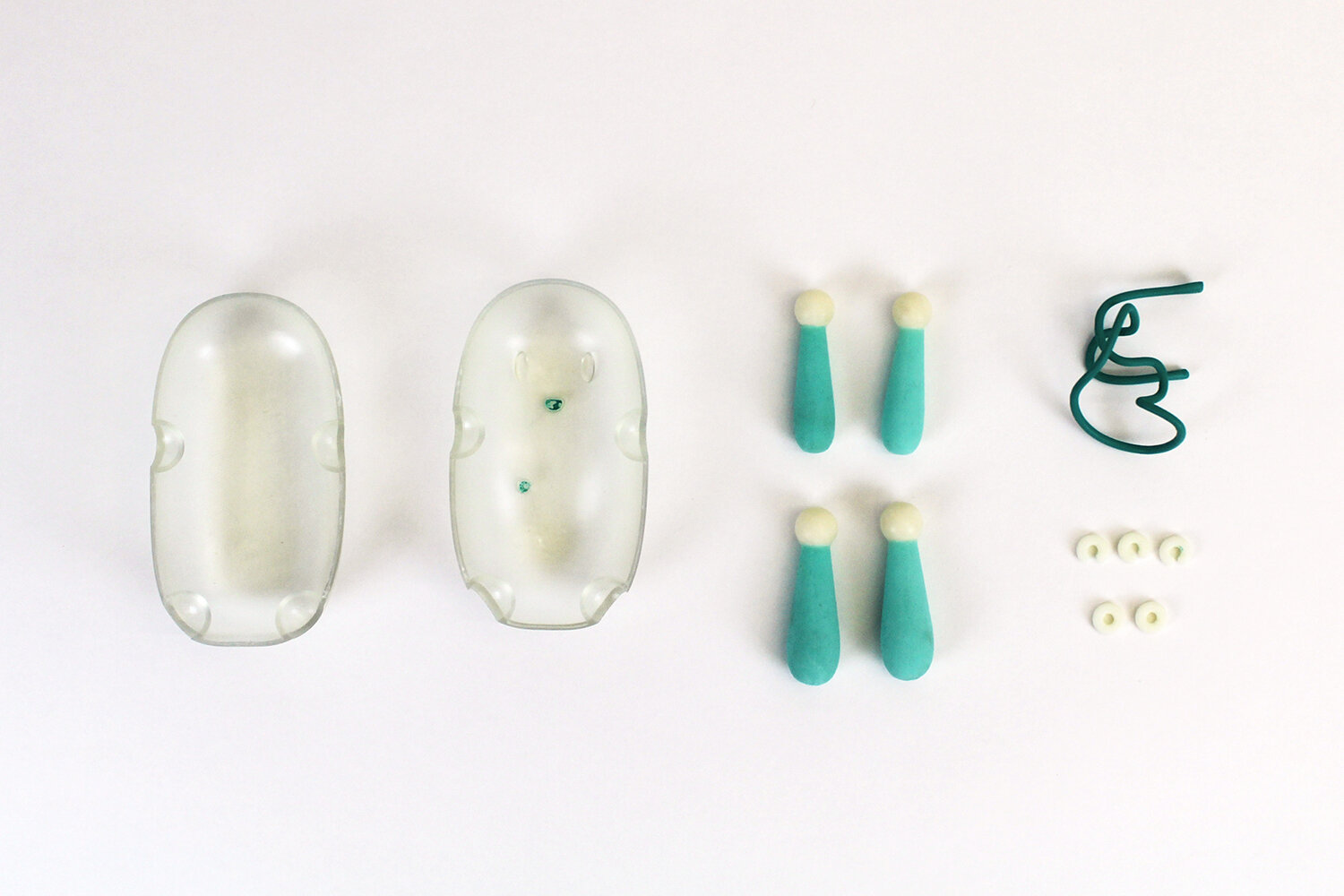
Further Development
To continue, I want to include older children that can relate better to a doll that doesn’t rattle and instead it’s just a Tubie doll.
I took a minimalist approach to the doll to match the simple design of the Playcemat and focus on seeing the inside beads. Instead, I would’ve changed the design to have a more prominent feeding tube “button”, just like the tubie pads that mothers sew onto their kids’ dolls.
Tubie Book
Initially, I looked to design an app for the child and a pamphlet for the parents, but it was not the appropriate solution. Yet a story needed to be included to either educate the parents or find tubie representation for the children, so why not both?
Character Design
I imagined different types of characters in a two-by-two matrix: from realistic to abstract and from human to animal. I chose an abstract humanoid so that the children and parents can see themselves in the characters more easily.
Story
To make the story more relatable, I used terms used in the feeding tube community. Tubies are children that are tube fed and Super Tubie Graduates are children that successfully wean from the feeding tube (Feeding Tube Awareness Foundation).
The story focuses on the point of view of Sammy, a tubie, and their struggle in the tube weaning process. The rhymes makes the book more pleasant to read for the child and evokes nurture to those who read it. This way, parents can also empathize with the tubies story and understand better what they are going through.
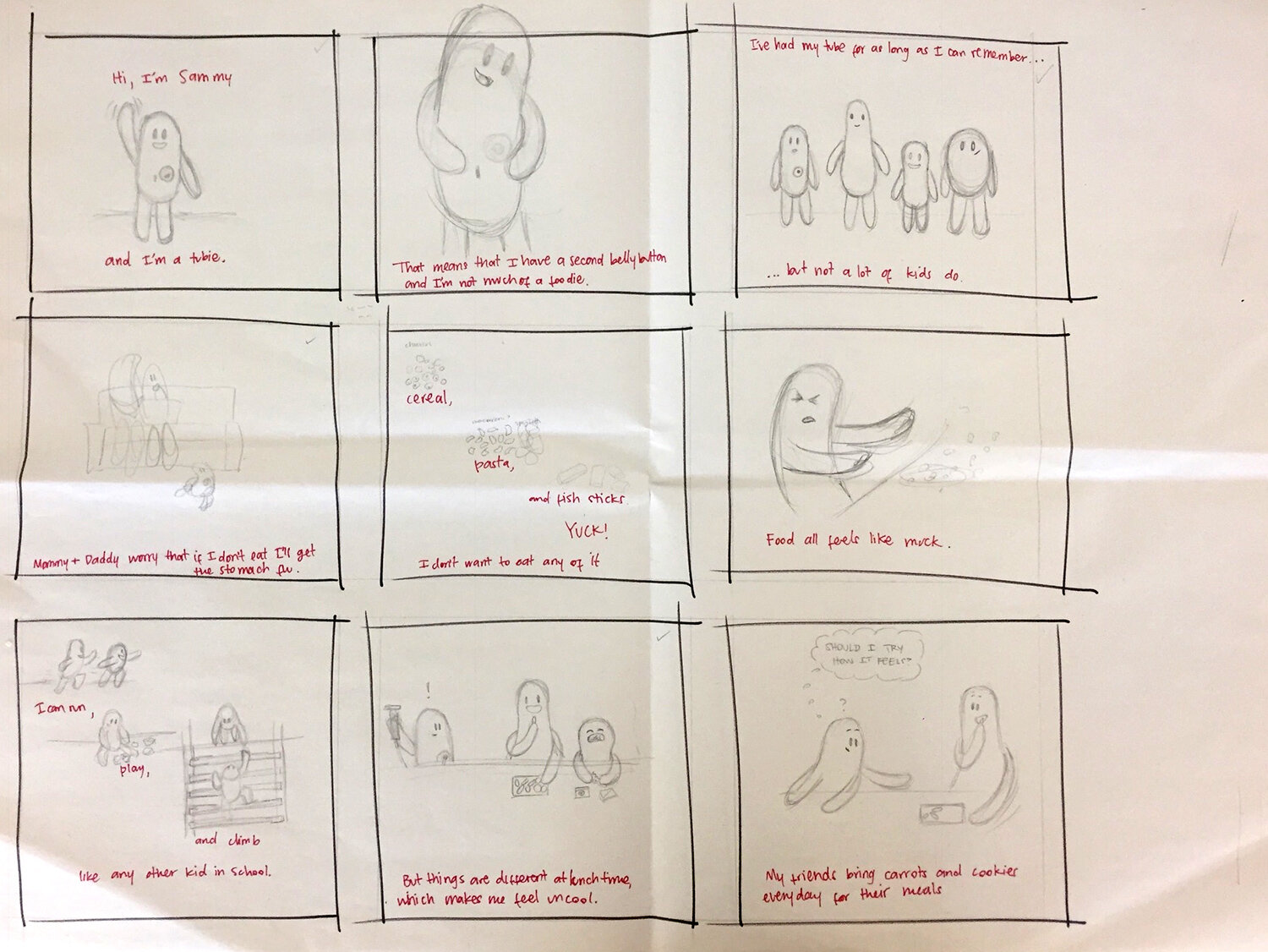
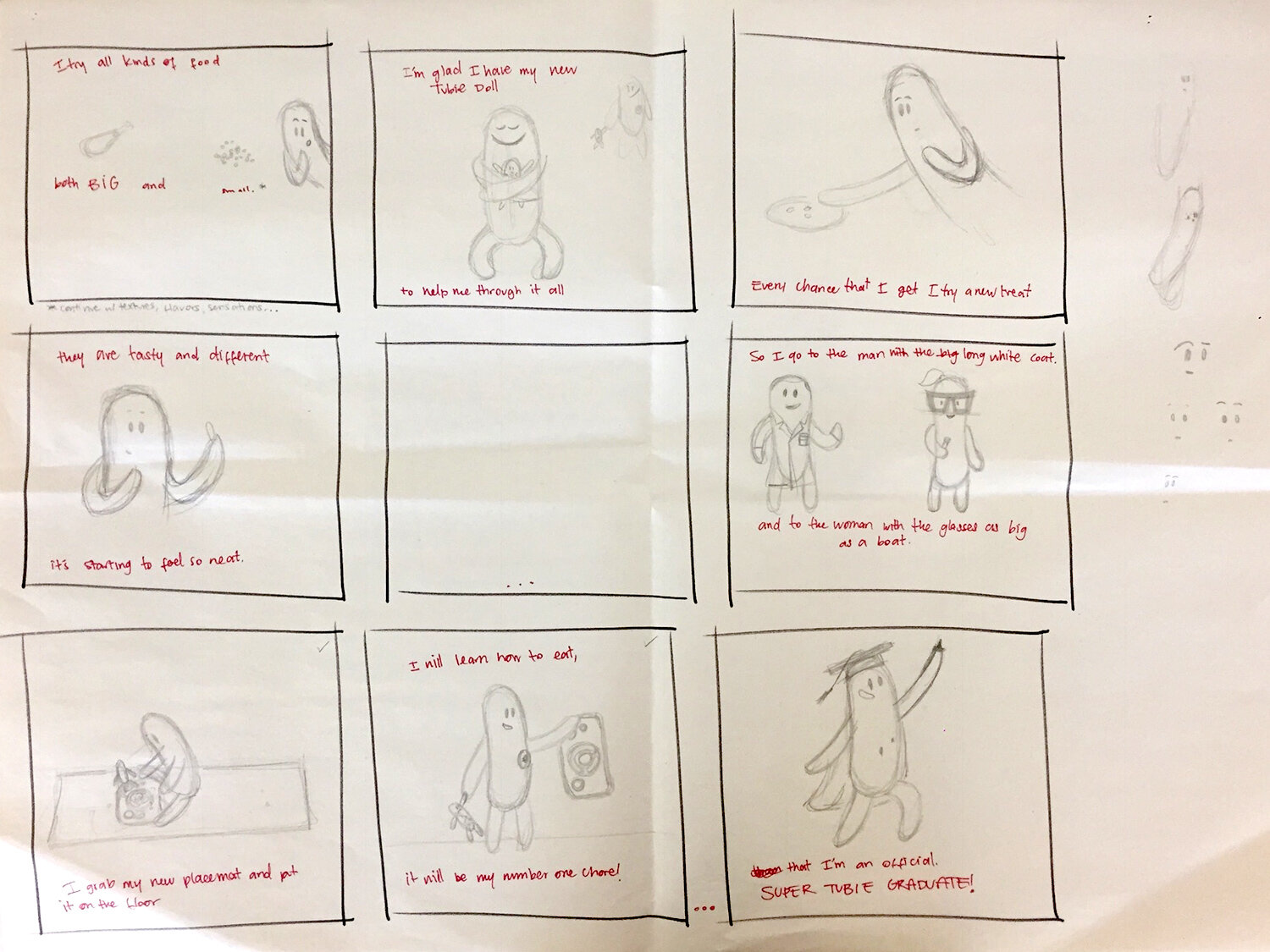

Conclusion
By applying approaches from different feeding therapies, such as free play to reduce stress and anxiety, and exploration with a variety of foods, the tube-fed child can become desensitized and slowly transition to chewing and swallowing, opening their culinary horizons.
Play With Food seeks to transform the home feeding environment into a stress-free space where the tube-fed child feels more comfortable to do what for most of us feels incredibly normal - to simply eat and drink.
Takeaways
Taking Barriers Into Account
Working with kids is more than just working with kids. It becomes more complicated when parents get involved, and even more so when working with medical professionals.
Analog vs. Digital
Sometimes working in analog makes for a better design. Specifically with the tubie book, using markers and pencils adds more richness to the illustrations.
More Time for Illustration Books
Writing children books takes a lot of time, especially if all pages are illustrated by me. I had to make the decision to focus on the Playcemat and Tubie Doll.























